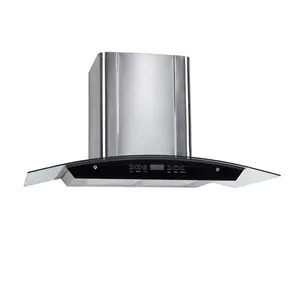

60hz Halogen Light Welding Kitchen Range Hood Saving Energy Curved Glass Cooker Hood For Hotel And Home

Kitchen Smoke Filter Charcoal Smoke Filters Cooker Hood Filter Range Hood Parts High Quality Activated Carbon Carton Box CHF004





















Selecting the ideal copper range hood for your kitchen involves understanding its essential role in both functionality and style. A copper range hood not only serves as a focal point in kitchen design but also plays a crucial role in maintaining air quality. This introduction delves into the various aspects of copper range hoods, ensuring an informed decision for your commercial kitchen needs.
Copper range hoods come in various styles, including wall-mounted, island, and under-cabinet designs, each suitable for different kitchen layouts. Wall-mounted hoods are perfect for kitchens with ranges against the wall, while island hoods are designed for center kitchen stoves. Under-cabinet hoods offer a space-saving solution. These hoods are not only pivotal in commercial settings for their functionality but also for their aesthetic appeal, adding a touch of timeless elegance to any kitchen.
The craftsmanship of a copper vent hood is evident in its durability and the patina it develops over time, which enhances its character. The material's natural antibacterial properties contribute to a hygienic kitchen environment. When considering a copper hood, it's essential to note the CFM (cubic feet per minute) rating, which measures the hood's air-extracting power, tailored to the intensity of kitchen use.
A copper kitchen hood offers multiple advantages, including effective smoke and odor removal, especially with vented systems. These hoods also act as a heat conductor, which helps to dissipate kitchen heat. The non-vented hoods, equipped with charcoal filters, are an alternative for spaces where ducting isn't feasible, recirculating filtered air back into the kitchen.
When choosing a copper hood range, size is a primary consideration. For indoor use, the hood should extend beyond the range by at least three inches on each side. For outdoor kitchens, a six-inch overhang is recommended. Noise level is another factor; a quieter system ensures a more pleasant cooking and dining atmosphere. Lastly, the type of exhaust system—vented or non-vented—will depend on your specific kitchen setup and needs.
In conclusion, a commercial copper range hood is a significant investment for any business-oriented kitchen. It's essential to consider the size, noise level, exhaust type, and CFM rating to find a suitable model. While Alibaba.com facilitates the connection between buyers and a wide array of suppliers, offering a diverse selection of copper range hoods, it's crucial to conduct thorough research to ensure the chosen hood meets your specific requirements.